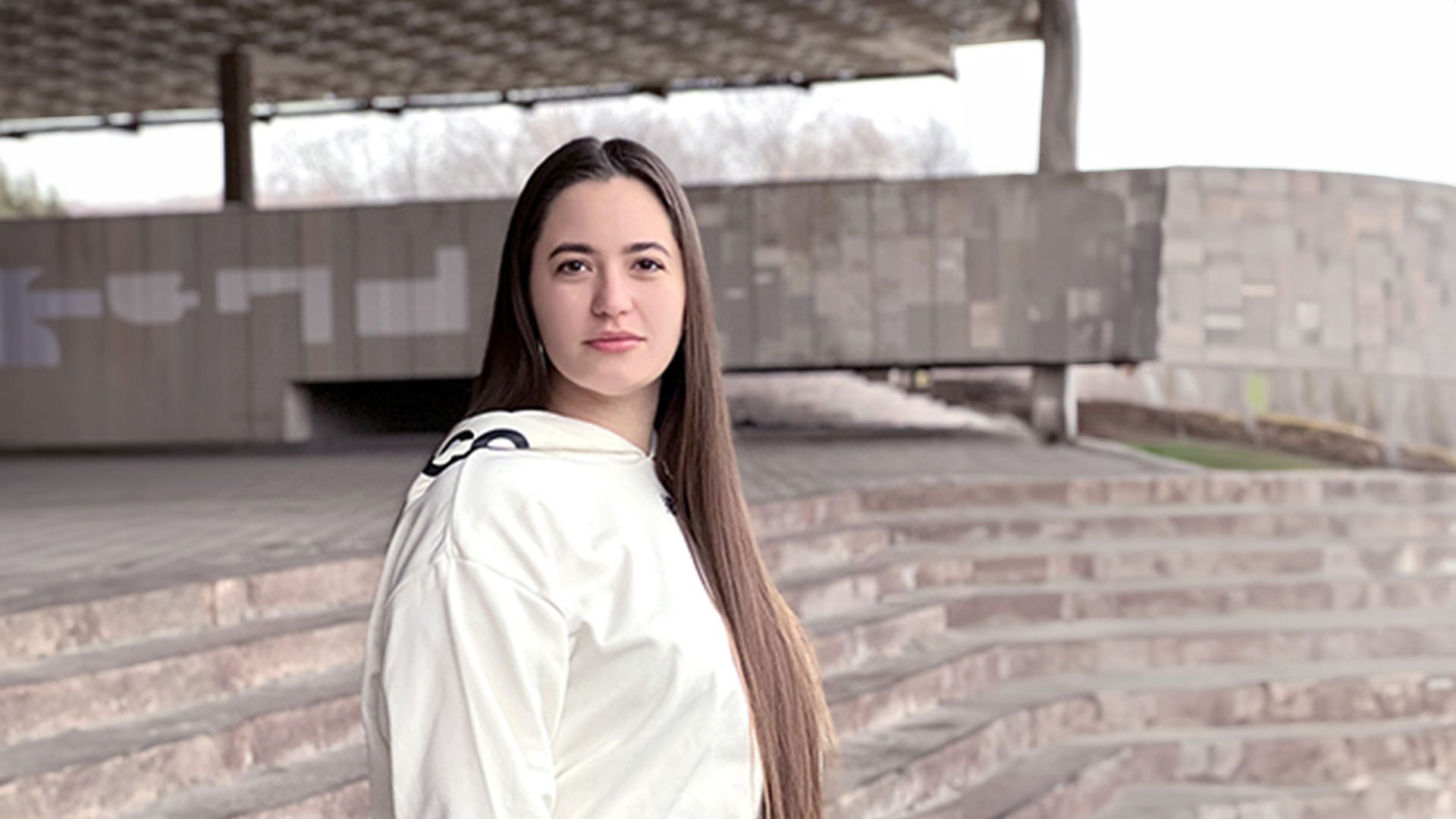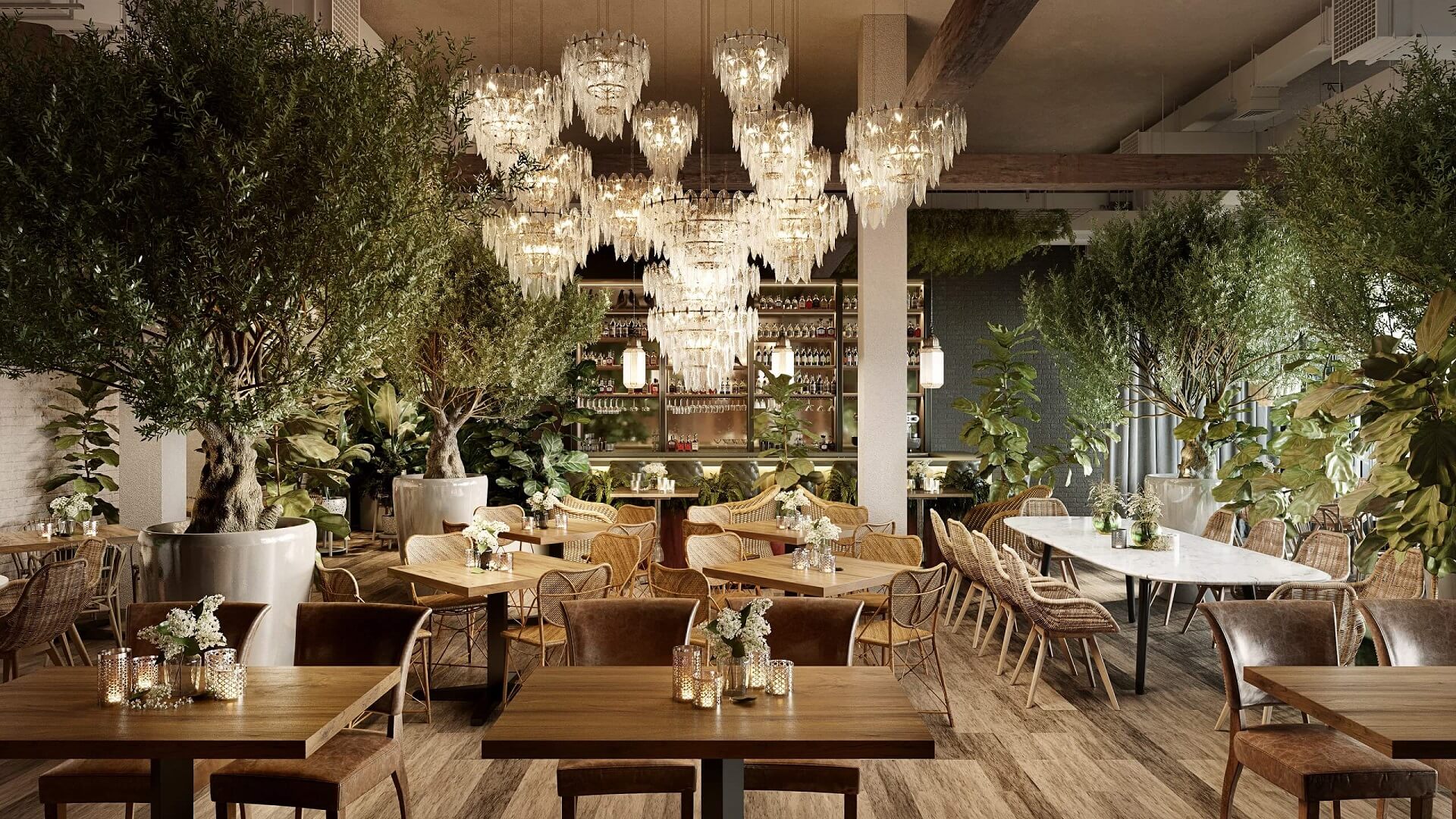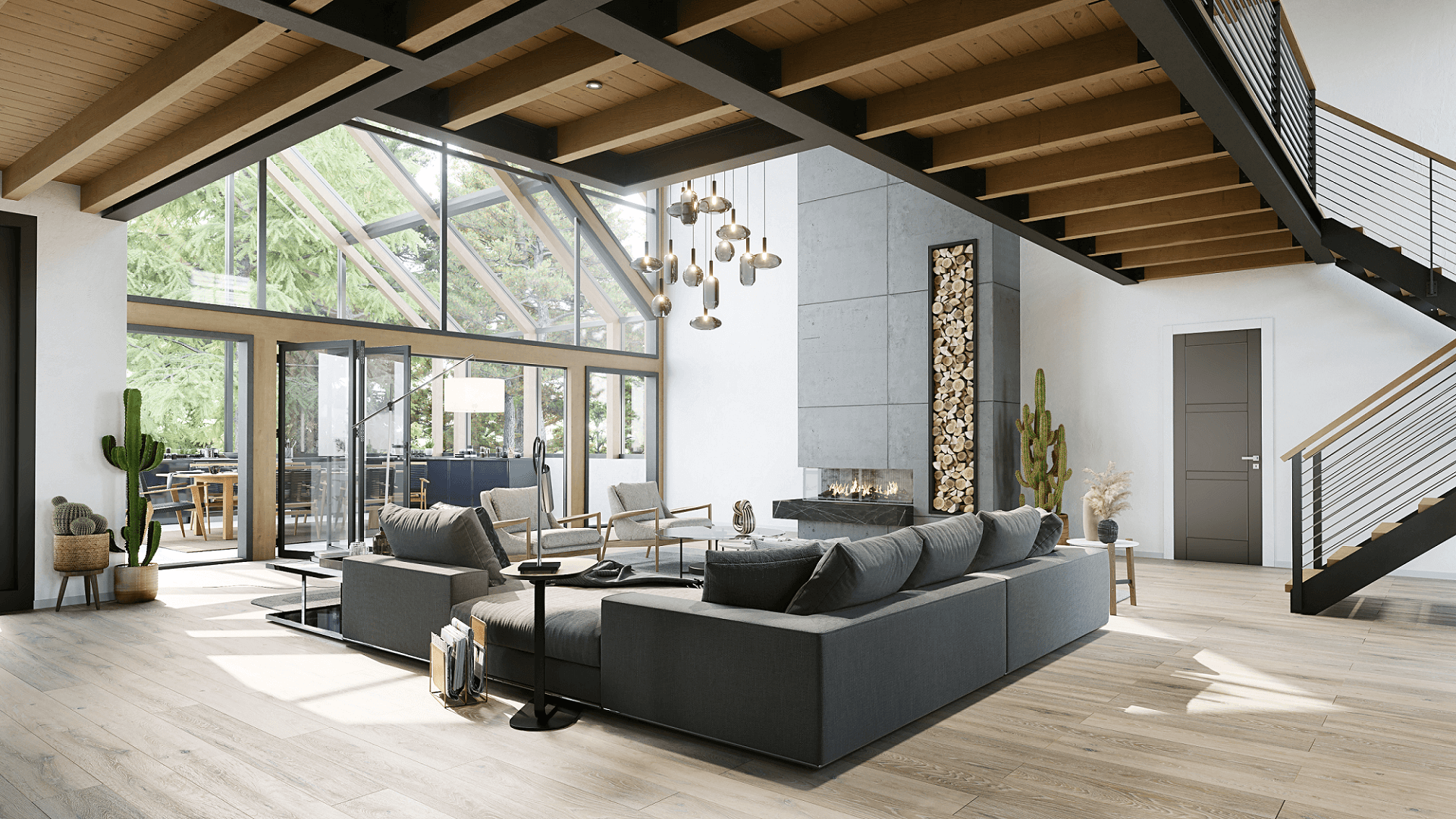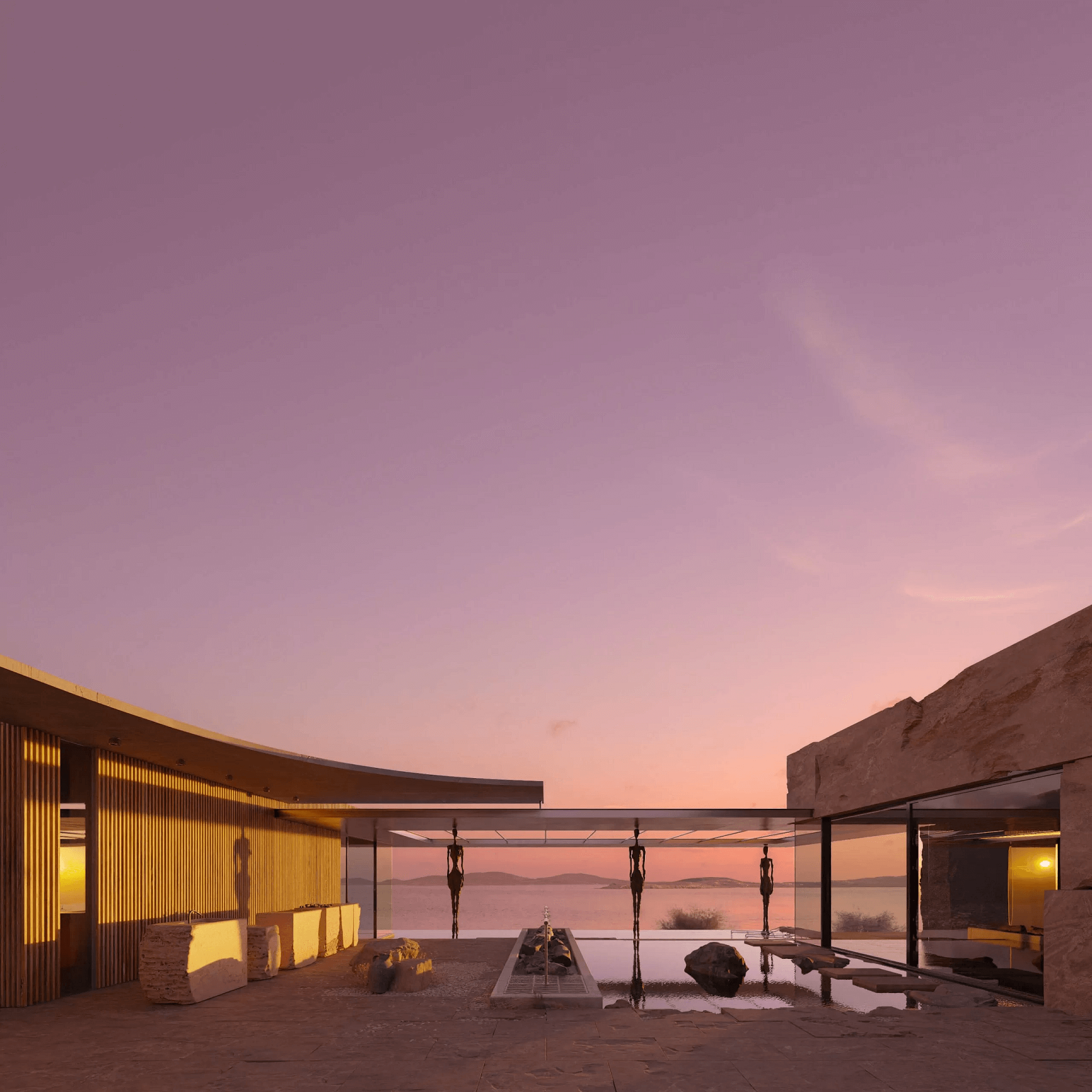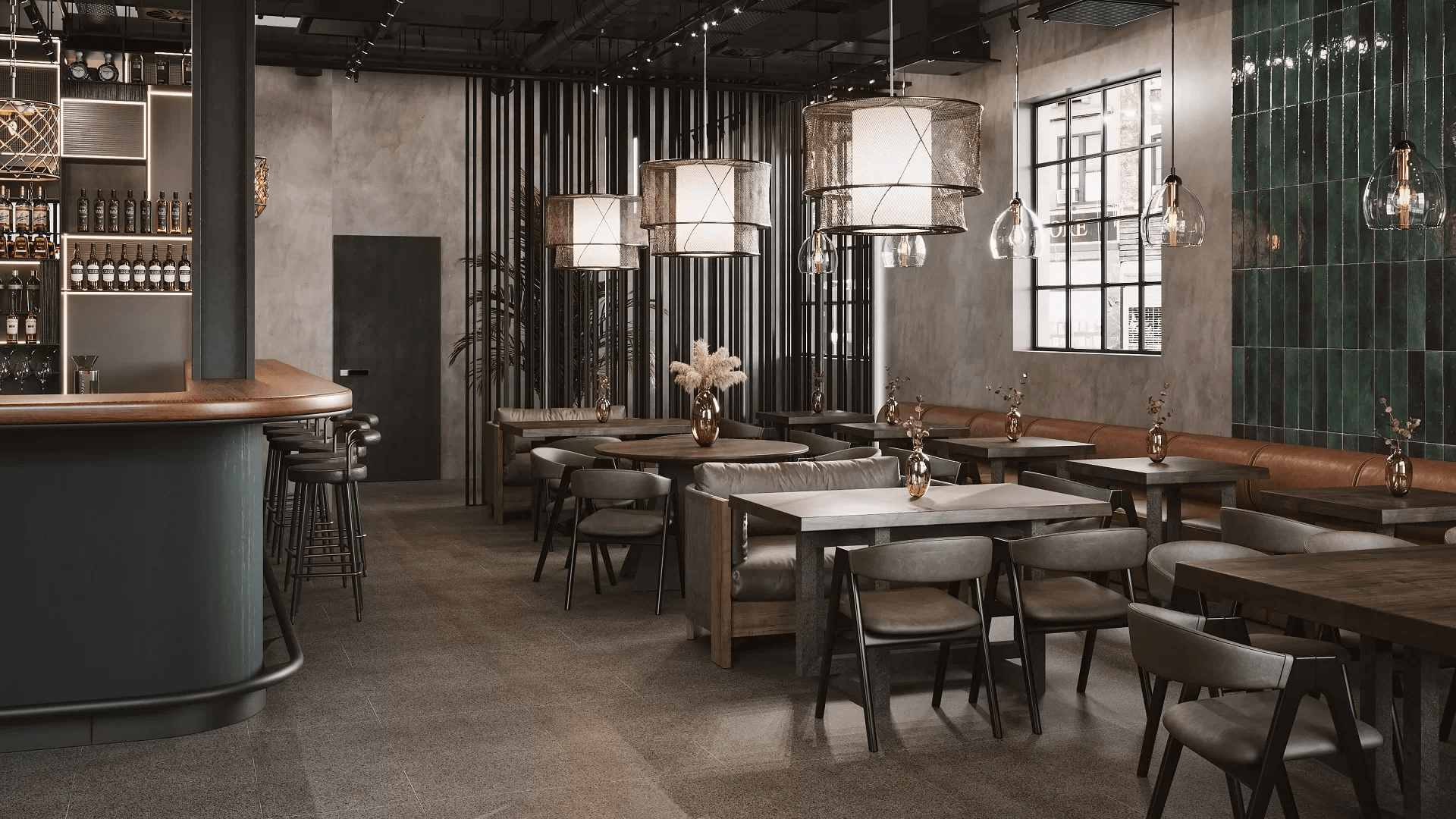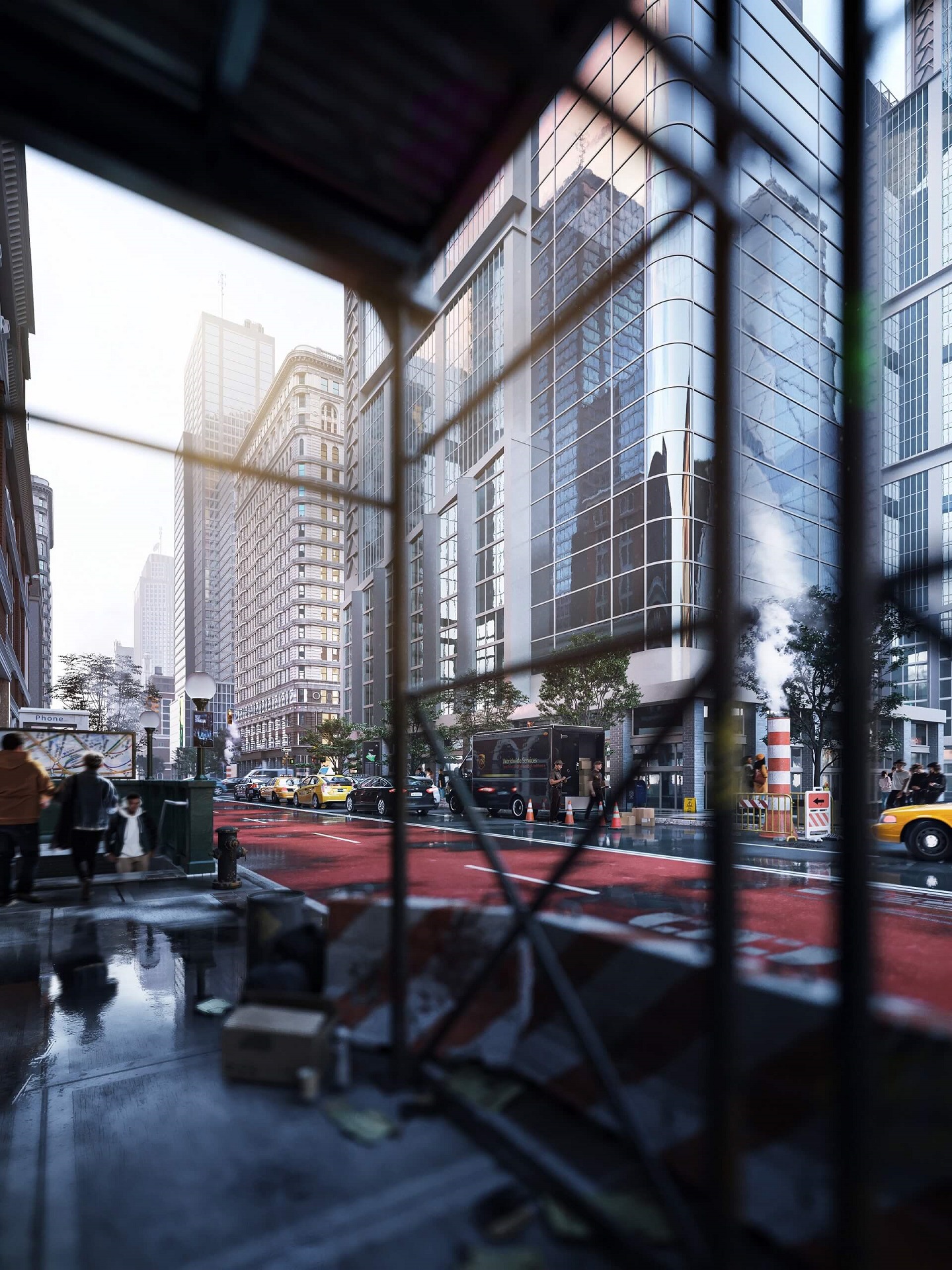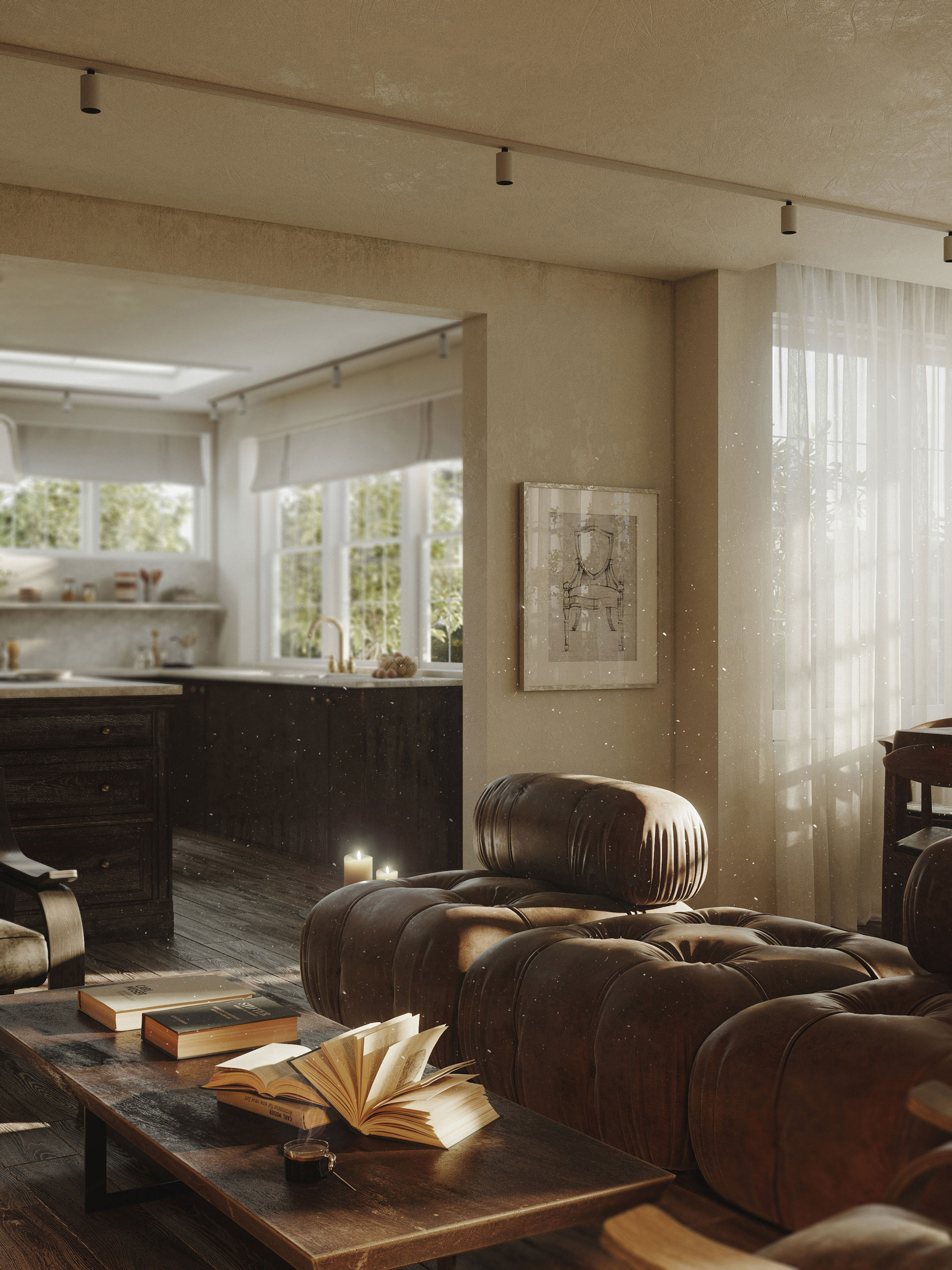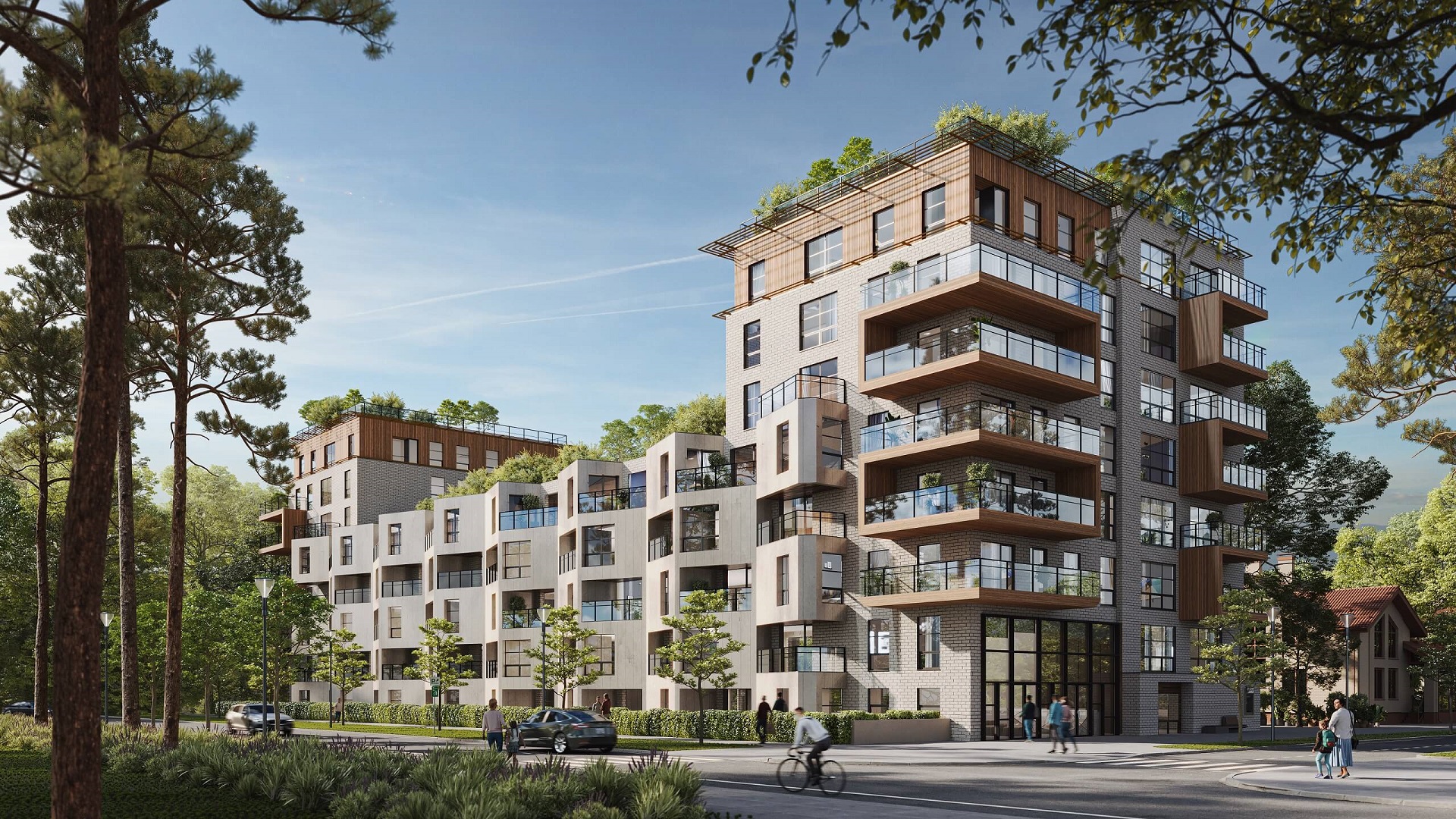In the archviz world, the role of a Senior 3D artist extends beyond creating stunning visuals. Seniors are also team leaders who guide and inspire beginner and middle 3D specialists. Veronika Ukrainets, a key member of the ArchiCGI team with more than six years of experience in the industry, does exactly that. She is known for her outstanding CGI skills as well as for friendly, open communication style with both clients and colleagues. Veronika has completed hundreds of impressive visualization projects and is now mentoring more than 40 artists.
In our interview, besides discussing Veronika’s career, we talk about the quality and types of CGI, an effective brief, the feasibility of getting top-notch renders within tight deadlines, and the impact of AI on the architectural 3D visualization industry. So, let’s get started!
Veronika, how did you enter the field of architectural visualization?
I studied architecture at the university in Kharkiv, Ukraine. As part of our curriculum, we needed to study various design software, and that’s where my journey started — with ArchiCAD. It was my ArchiCAD tutor who first introduced me to Autodesk 3ds Max. She showed me her projects made in this software, and I was immediately captivated. It looked so much more realistic and fascinating! So, I took a specialized course to study 3ds Max. It happened about six years ago, and that was a pivotal moment for me.
How fast did you grow to a Senior 3D artist level?
At the beginning of my career, I was mostly involved in small and mid-size interior design 3D visualization tasks. Things started to shift about six months after I’d started working. That’s when I began collaborating with a major client from the UK. With him, I got the chance to work on larger-scale projects. It was a game-changer. So, within a year and a half of starting out, I found myself in a mentorship role, guiding other 3D artists.
Why did you prefer joining a large CGI studio over freelancing?
Working as a freelancer means dedicating a lot of time to client communication and setting up processes. At ArchiCGI, it isn’t my primary responsibility. Most of the time, I do creative work or mentor my team of artists. I’m involved in initial online meetings to brief clients, and that’s mostly it. However, with some, we’ve developed warm professional relationships, and I talk to them quite often, discussing work or proposing new ideas.
I enjoy communicating with clients, but typically, that’s the job of client managers and project managers. This division of roles makes our work efficient, allowing everyone to focus on what they do best.
What countries do ArchiCGI’s clients come from? Can you give us some names?
Our clients come from different parts of the world. The majority of them are from the United States, but we also have clients from Europe, like Germany, the UK, Sweden, Denmark, and plenty of other countries.
Let me give you a few examples. We’ve worked with some pretty big names, like Zaha Hadid and Hyatt. Then there’s SKB, an architecture firm licensed in over 20 states in the U.S. that has designed projects in over 100 countries.
Showcase your architectural project like a true work of art, brought to life with cutting-edge AI-powered CGI technology.
As I said, we’ve got plenty of designer and architect clients from all across the US. In Florida, we have Marc Janecki Design. Marc is known for his exceptional and innovative designs, especially in the residential sector. Sterling-Huddleson Architecture in California is another one of our clients. They’re all about thoughtfully executed design solutions that inspire and enlighten people’s lives. Narrative Design Studio in San Francisco focuses on residential and boutique hospitality projects. They’ve got a great eye for storytelling through design.
The majority of our clients are from the US, but we also have clients from Europe, like Germany, the UK, Sweden, and Denmark.
Then there’s Land Ark Homes, an award-winning Canadian company with a 30-year history in residential design and construction. Another partner of ours is Surface Developments, a premium real estate development company based in Ottawa.
Over in Switzerland, there’s Studer Innen & Architektur, who specialize in hospitality. And then there’s Tristan du Plessis from South Africa, a young award-winning designer with a decade of experience in luxury hospitality design.
Honestly, these are just a few names. I could talk for hours about the incredible range of clients we work with at ArchiCGI. If you’re curious to learn more about our clients, understand our workflow, and see the outcomes of our collaborative projects, check out our case studies.
At what stage of a project should an architect involve a 3D artist?
There are two possible stages to reach out to 3D artists: during the concept phase and once there’s a detailed project plan. When there’s a clear plan, the process is straightforward — creating visuals strictly according to the brief as the client envisions.
During the concept stage, a 3D artist’s help is essential for architects and real estate firms who have a vision but no clear plan on how to convey it. For instance, they might have an idea to depict their building as a green oasis in a cityscape. We can offer various methods to showcase this concept, like highlighting how the building integrates with or stands out from its environment. We can also advise on angles, lighting, and details to enhance the concept. This can be useful for advertising, competitions, or tenders — any situation needing a concept over a finished project.
A 3D artist’s help is essential for architects and real estate firms who have a vision but no clear plan on how to convey it.
How to compose a brief that efficiently conveys the project vision to an artist?
It’s fantastic when clients start with what I call a ‘Look and Feel’ mood board before diving into the specifics of the brief. Such a mood board might include images not directly related to the project but conveying how the client ‘feels’ about it. It could be a picture of a space, an atmospheric nature shot, or even just close-ups of preferred colors and fabrics. Such visuals help artists understand what resonates most with the client. For instance, they might instantly highlight a focus on cozy fabric materials or a dreamy mood.
If you are unsure about what you want at the start of the project, it’s very helpful to at least specify what you definitely don’t want.
Another tip is to be specific with references. Let’s say you attach a picture of a cityscape. Then it’s helpful to point out what exactly is important to you in that image. Is it the architectural style, the lighting, the weather, or some other aspect?
One more piece of advice: if you are unsure about what you want at the start of the project, it’s very helpful to at least specify what you definitely don’t want. For example, saying ‘I don’t want any clouds in the renders’ will save time for both you and us.
What type of 3D visualization do your clients order the most often?
In most cases, clients would need beautiful imagery where everything is clearly visible, with sunny summer weather, and attractive colors. It’s a common approach to commercial architectural visualizations that suits the majority. For standard presentations and marketing images, such commercial renders work just fine. That’s an ideal sales picture.
However, sometimes, clients need something more creative. That can be moodier images, with atypical, dramatic lighting, weather effects, and unusual angles.
In case a client wants something unusual and more artistic, they should be prepared for it to take a bit longer. That is because we will need to dedicate more time to virtually every object in the 3D scene.
How can an architect make the most of the ideal sales pictures you mentioned?
In reality, when something is built and then photographed, people usually aim for perfection, like flawless corners and spotless surfaces. But in 3D, everything starts off unrealistically perfect. So we need to add some “perfect imperfections” to renders to make them feel more lifelike. These details might be barely noticeable, like slightly varied table positions, signs of movement, or natural wear on object corners. The idea is to create a sense of life and realism.
We need to add some “perfect imperfections” to renders to make them feel more lifelike.
It’s also vital to know how to set highlights with lighting. Just look how light shapes the perception in the rendering below.
The atmosphere is another key; for instance, a French restaurant meant for evening dates should be shown in evening light, not morning.
Then, it’s essential to decide on the placement of objects and decorations to enhance 3D storytelling and convey the resident’s lifestyle or a business’s values.
Also, you’ll probably need to give your artist a bit more time, because fine-tuning the lighting and small details often takes more hours than building the entire 3D scene itself. For instance, here’s an image that can be created in roughly 10 hours.
And here’s what can be achieved within 25 hours.
Can you feel the difference?
In short, the right details and atmosphere can make sales pictures more effective and engaging. To use this potential to the fullest, you’ll need an experienced artist. That’s because knowing all the above-mentioned aspects requires a lot of practice and continuous learning. We have many such senior-level 3D specialists on our team.
What are the specifics of using more creative, artistic renders?
Not every project, or rather its goals, requires an artistic render. One of the main aspects of creating such a rendering is the specific composition of the frame. If you look at real photos of restaurants or hotels, the shots are not super informative. They’re more atmospheric, designed to convey an emotion and make people want to visit.
However, if the project’s goal is to approve a design, then an atmospheric render isn’t necessary. It’s more important to have a frame that shows as much of the space as possible and is primarily informative. For instance, it should confirm that the wall color works well with the sofa and curtain colors. In this case, artistic renders might only serve as additional, bonus visuals.
Artistic renders might be needed for architectural competitions, tenders, portfolios, or collaborations — for instance, to create PR articles with intriguing imagery. They work perfectly in cases where one needs visuals that would catch the eye, amaze, and be memorized.
Artistic renders might be needed for architectural competitions, tenders, portfolios, or collaborations.
Is it possible to get impressive high-quality CGI within a tight deadline and on a budget?
Yes, under certain conditions. For instance, we can do that if we’re already familiar with the client’s specific needs. Oftentimes, a client might need renders of fairly similar structures with typical materials, showcased in a uniform setting. In such cases, we can model the new building, put it inside a scene we’ve already created for this client, and make slight modifications to it – tweak the lighting and surroundings. This way, we can produce a new beautiful image promptly.
So yes, it’s possible, but not from the first project. To be very fast, we need to build a base of scenes, lighting scenarios, materials, and models for that client first. Once we have that foundation, we can quickly produce renders by combining pre-existing settings and elements. This approach can often cut the costs and time in half.
To be very fast, we need to build a base of scenes, lighting scenarios, materials, and models for that client first.
Tell us about the impact of AI on your workflow.
I just love ChatGPT. Oftentimes, I ask it for advice on how we can better assist our clients or what we can additionally offer them. Also, for instance, if a client sends me a file in a format I’m not familiar with, instead of spending time googling, I just ask ChatGPT how to open it in 3ds Max. And it provides me with a step-by-step guide.
Another thing I’ve found useful, more as a 3D artist than a Mentor, is asking ChatGPT to create training programs for me. I told it I wanted to learn how to make animations of a certain style and asked for a detailed plan with steps and information resources. It gave me exactly what I needed, which was incredibly helpful.
What about visual AI tools like Midjourney?
I often find myself in situations where I have several images that I want to use as references for a task, imagining a mix of them in my head. But it can be challenging for another 3D artist to understand exactly what I’ve envisioned. That’s where Midjourney comes in. It can make these images into one with its “blend” command.
For example, I liked certain aspects of two different interiors that matched a client’s style. Here they are.
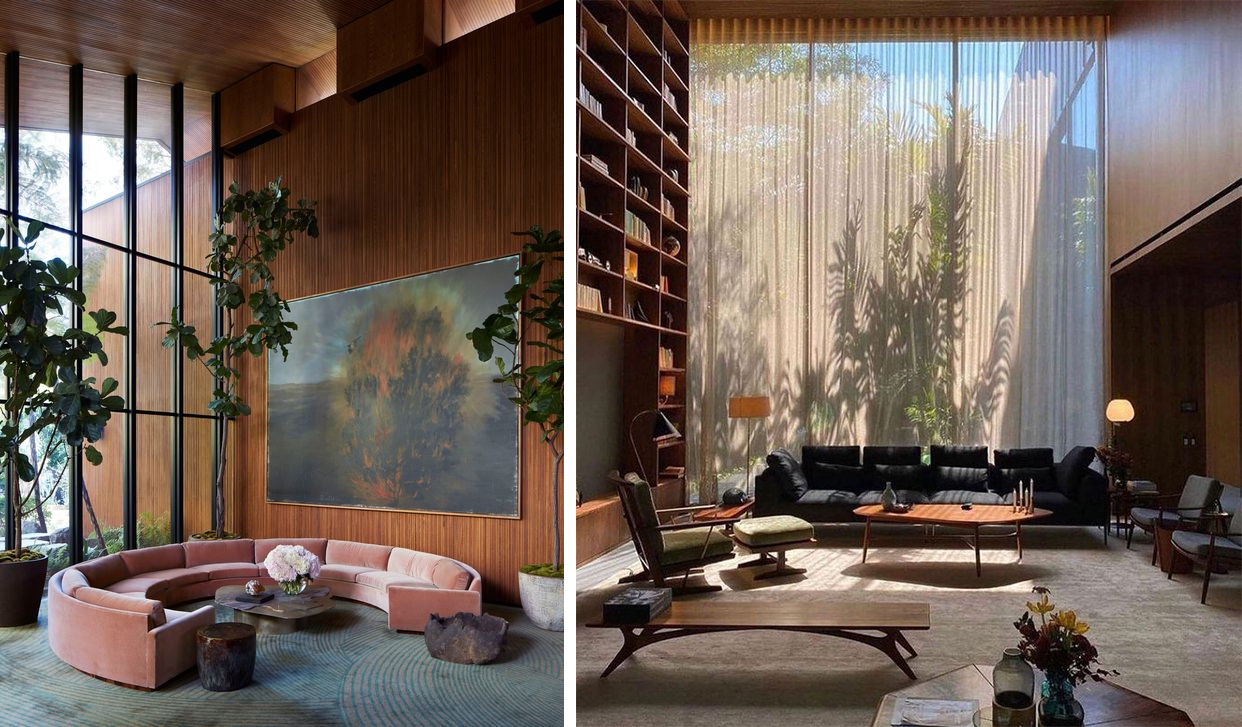
I blended these images in Midjourney, and it created perfect references for my 3D artist. Just take a look.
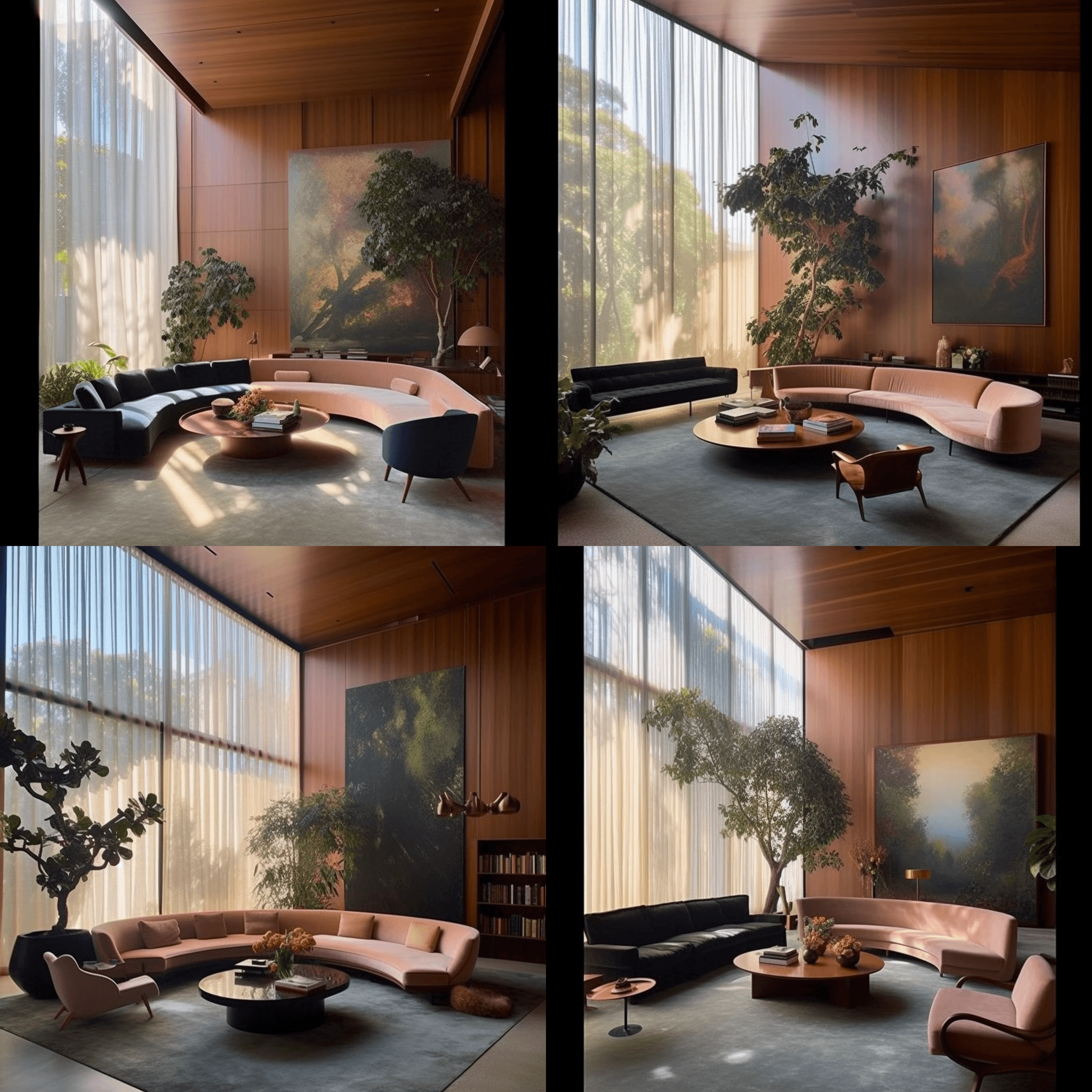
Also, AI is a great tool to help create references from scratch, though it’s not a very fast process. With Midjourney, to get close to a specific picture that I imagine, I need to spend a lot of time selecting prompts. In essence, I could create the same image in 3ds Max during that time. But using Midjourney is easier for me; it takes fewer resources, and the result is just as good.
I’m also planning to explore Stable Diffusion. Firstly, it allows working with video, and secondly, it has a feature for enhancing 3D people in renders. This is something we really need. Some of our CG specialists have already started using it.
Do you worry that AI might replace 3D artists?
I was concerned until I started using AI myself. Then I realized that it could only really do some basic tasks. It’s like with programmers: AI can write code based on existing codes. So, we’ll need more people who can find new solutions, while those who just repeat learned tasks will be less in demand.
Overall, I can say that AI is suitable for creating references and rough concepts faster than in 3D programs. But for executing detailed briefs and large-scale orders requiring high precision and quality, it’s still far off. So, 3D artists don’t have much to fear in the near future.
AI is suitable for creating references and rough concepts faster than in 3D programs.
The latest innovations, such as OpenAI’s Sora, don’t scare me either. I’ve seen the promo videos and consider it as a tool for us, not a threat. For example, this program could help us create references for animations.
A big thank you Veronika for your valuable insights!
We hope that Veronika’s expertise in 3D visualization, along with tips on CGI quality and workflow, will be useful for you in your projects with us.
Looking for 3D rendering services that blend artistic vision with technical prowess? Contact ArchiCGI to experience a service where quality, efficiency, and creativity come together to bring your visions to life!

Catherine Paul
Content Writer, Editor at ArchiCGI
Catherine is a content writer and editor. In her articles, she explains how CGI is transforming the world of architecture and design. Outside of office, she enjoys yoga, travelling, and watching horrors.


